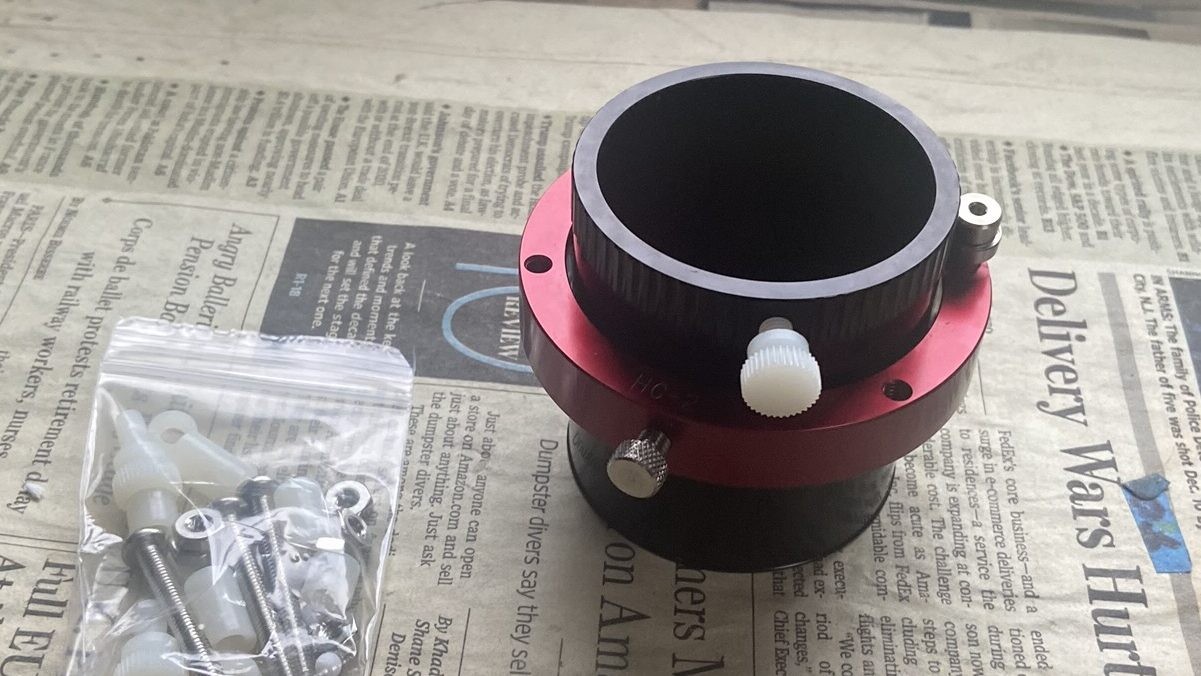
Helical focusers are basically a big screw with a hole in the middle for an eyepiece. The “screw” threads of the draw tube turn inside an identically threaded receptacle. Typically, a thumbscrew or two is on the receptacle part of the focuser body to adjust friction.
Helical focusers are easy to make to fairly fine tolerances. As such, some star diagonals, like the T2 Prism sold by Baader Planetarium, as well as most binoviewers that I’ve used, have miniature helical focusers built in for fine adjustment as a supplement to the telescope’s stock focuser. So too does the Questar on its eyepiece holder.
The downside is that if the threads are finer, it takes longer to make a coarse adjustment. And if the threads are coarser, they can wobble and deflect, affecting apparent collimation and making it hard to focus at higher powers.
Pros
- Cheap
- Hard to damage
- Usually offers plenty of fine adjustment
- Lightweight/low-profile
Cons
- Can be time-consuming to make coarse adjustments
- Deflection/wobble with heavier accessories
- Entire eyepeice/diagonal/camera rotates (except in nonrotating designs)
- Usually relies on using inserted eyepiece/accessory as a grip, which is not ideal in all circumstances
- Hard or impossible to motorize
Nonrotating Helical Focusers
The rotation induced by twisting the entire eyepiece/drawtube assembly can be an irritant when trying to do photography. So, many small refractors and guide scopes designed for astrophotography have a non-rotating helical focuser, which essentially keeps the drawtube on a slotted track, preventing it from twisting as the rest of the focuser spins.
Helical Crayford Focusers

Helical Crayford focusers replace the threaded drawtube and receptacle with a smooth drawtube and a set of angled rollers instead.
These focusers work very well, but it can be hard to design one that offers both fine adjustment and high weight capacity. Most helical Crayfords force me to compromise one for the other.
The KineOptics HC-2 and HC-1 are examples of quality helical Crayfords I can recommend. I’ve also made one myself fairly easily out of readily available hardware.
